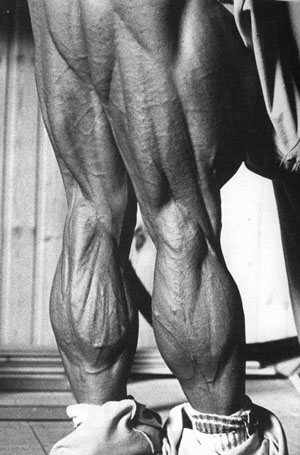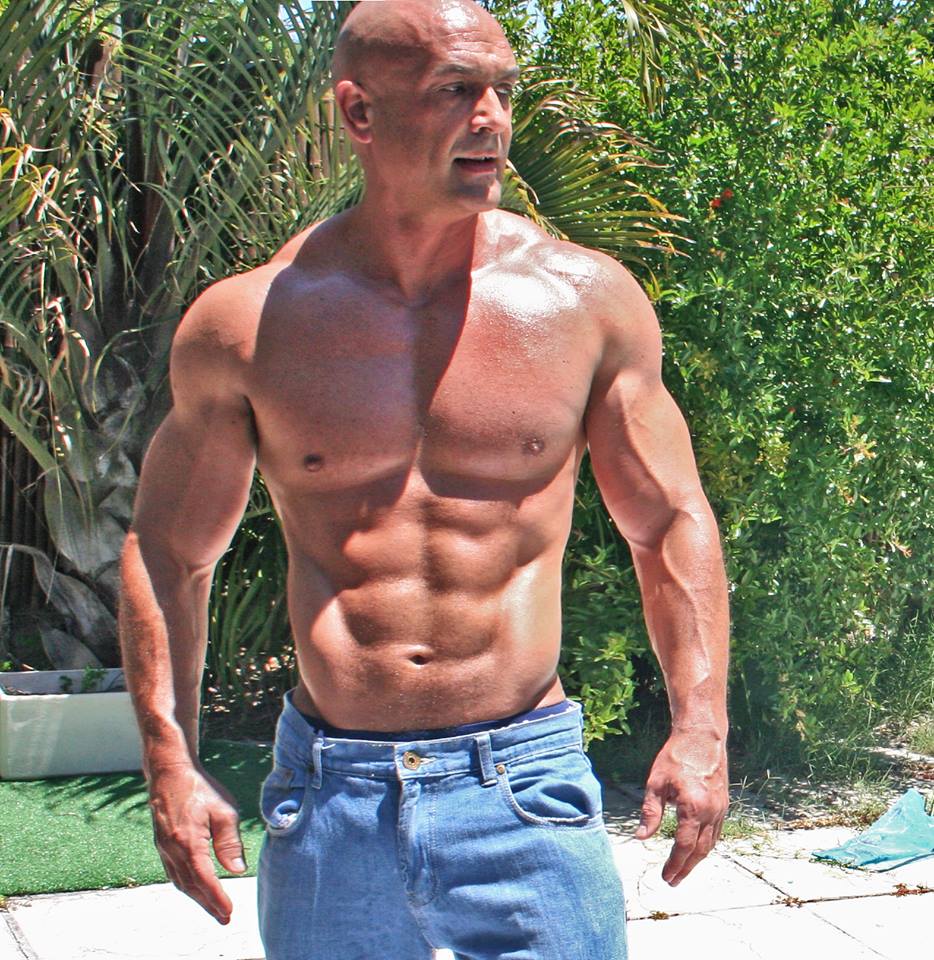My friend Sam said that he was “quitting bodybuilding.”
Now Sam isn’t a bodybuilder per se. He’s never competed or immersed himself in the seductive world of Pro Tan, posing trunks, and tuna farts. But he does take his physique seriously, and until recently seemed very pleased with his progress.
Hell, I was pleased with his progress.
In a few short years he’d gone from a sloppy-looking cubicle gnome to a fit, muscular, all-around bro.
Sam did it by being a machine — he rarely missed workouts, tracked his poundages, and counted his protein to the gram.
He did not eat garbage, ever. He even stopped drinking completely, which I appreciated. Designated drivers are worth their weight in gold on half-priced Irish whiskey night.
The reason Sam was hanging it up was that he’d stopped making progress.
“In my first two years I gained 20 pounds of muscle and lost the same amount of fat,” he said.
“But the last three or so years, I’ll try to bulk and gain 10 pounds of mainly fat, and then diet those 10 pounds off and look basically the same.
“And I can’t get my legs to grow at all.
If this is my set point, my limit, then that’s fine. I’ll just switch to ‘maintenance’ training and do something else with my energy.”
Sam’s not entirely off base. We all have a genetic ceiling, drugs or no drugs. And maintaining muscle size is relatively easy, once you’ve been able to put it on.
But the problem is, Sam was nowhere near done “putting it on.” And after I saw his training program, I knew why.
Sam was doing one of those “perfect” weight training programs. The kind younger lifters who spend a lot of time on social media tend to recommend.
Squats and bench presses and deadlifts for lower reps. Equal amounts of slightly higher rep work for the biceps, triceps, shoulders, and back. Even the calves and abs got a cursory 3 sets of 12-15. Oh, and 3 extra sets of leg presses, for his “weak” legs.
It looked nice and balanced and unthreatening, like that creepy old guy from the eHarmony commercials.
And totally ineffective for all but outright beginners.

A balanced program is smart, on paper at least, as it “should” lead to a symmetrical physique.
But how many respond to training in a perfectly “symmetrical” way?
After the first year or two of lifting, most of us discover that we have 1 or 2 strong bodyparts that grow quite easily. Usually bodyparts that we “love” training and are easy to get a pump in.
The rest, however, tends to progress at a more glacial pace, including at least one bodypart that absolutely refuses to grow no matter what the hell you throw at it.
There are a lot of things you can do to address this problem.
Learning (and practicing) perfect technique is one. A weak bodypart can be the result of poor mind-muscle connection or just plain lousy form. Like those idiots who turn cable rows into a spastic lower back/calf/neck exercise.
Exercise selection is another. A strong bencher often has great shoulders and triceps but comparatively poor chest development. For them, variations of the dumbbell press are better pure pec builders. Or even machine presses.
But you don’t figure this out until you decide to break from benching and take different lifts out for a test drive.
Yet one of the most effective things you can do is also the most obvious – train weak bodyparts more.
As in more exercises, more sets, more reps, more frequently, and with more intensity techniques.
What we bros call a “specialization program.”

Muscle growth happens in spurts.
It’s never linear. And as my friend and fellow bro John Romaniello says, the more muscle you have, and the closer you get to your ceiling, the tougher it is to grow more.
You have to really “push the envelope” in terms of volume and muscle trauma to stimulate new gains in size.
But you can’t just train everything harder as this would exceed your ability to recover. So the trick is to specialize on just one muscle group at a time (at most two smaller ones) and put everything else on maintenance.
Actually, maintenance is a misnomer. Mailing it in is more like it.
Think whatever you’re currently doing and subtracting 30-50% of the volume, and not going above 80% effort. That means no failure training, no drop sets, no supersets, no grimacing.
To be frank, most guys – especially Mr. I Have to Follow A Perfectly Balanced Program At All Times — can’t handle this.
Even though it’s only for a limited time – a specialization phase shouldn’t exceed 4-6 weeks – the urge to “do more” or stay “in balance” is too much for them to handle.
They sneak in extra sets, throw in some more “pre-hab” exercises, and suddenly their 6-week arm specialization program has morphed into some untenable training monstrosity that would leave Ronnie Coleman muttering, “Shit, ain’t we done yet?”

New Rules of Specialization for Size
- Number of body parts: One body part or muscle group (chest, back, legs, arms, etc) at a time.
- Sets: 40-50 sets per week
- Frequency: 2-4 exposures per week. Spreading the weekly volume over more training days typically works better.
- Rep ranges: All of them! 4-6, 8-15, 12-25. Even sets of 50. The only range to avoid would be sets of 3 or less, especially if frequency is on the high end. Save that for a dedicated functional hypertrophy phase.
- Exercises: All of them. Compound lifts are great but isolation work earns its stripes during a specialization phase. Also include both unilateral and bilateral movements.
Bro-Science tip: Variety is a strong hypertrophy driver, so during specialization phases I like to program exercises that I haven’t used consistently in two years at least.
This doesn’t mean making up silly exercises – just switching from wide-grip barbell curls to medium grip. Buy Bill Pearl’s book The Keys to the Inner Universe. You’ll find plenty of options.
- Intensity Techniques: Mid-rep pauses, peak contractions, accentuated stretches, drop sets, super sets, and compound sets. Just not all in the same workout. Avoid techniques like forced reps or negative reps.
- Everything Else: Maintenance. Since training to 80% effort can feel kind of fruity, use full body workouts with basic, compound exercises performed with perfect technique while leaving a few “reps in the hole.” This will provide a solid training effect and make you feel like you’re actually doing something worthwhile. Which you are — reinforcing great technique.
- Duration: 4-6 weeks max. You need to reduce volume to allow supercompensation to occur. It’s also wise to return to more “normal” training before embarking on another specialization phase.
For example:
4-6 week Arm Specialization
1-2 week Unloading (volume reduction)
4-8 week “Normal” Program
4-6 week Leg Specialization
Note: Never do back-to-back specialization phases for the same muscle group. It doesn’t work.
Let’s get back to Sam and his puny legs.
Sam wasn’t doing much hamstring work to complement his squats and deadlifts, so there was a huge opportunity to make gains.
He needed to start hitting both knee flexion (leg curls) and hip extension (good mornings), and get used to extended time under tension (through supersets and tri-sets). And most of all, get used to getting his ass kicked.
The following program I unabashedly stole Charles Poliquin and mixed it with stuff I’ve learned from John Meadows and Bret Contreras, amongst many others.
Note: I steal from everyone. Cheque’s in the mail guys.
Monday
A1) Lying Leg Curls, toes pointed away (plantar flexion). 4 x 4-6 reps. 4 second negative. NO REST
A2) Lying Leg Curls, toes neutral (dorsiflexion). 4 x failure. 4 second negative. Rest 90 seconds before return to A1.
B1) Medium Stance Squats. 4 x 6 reps. 4 second negative. Rest 10 seconds
B2) Walking DB Lunges. 4 x 12 reps/leg. Explosive. Rest 10 seconds
B3) Leg Extension. 4 x 25 reps. Rest 120 seconds before return to B1.
C) Hip Thrust or Butt Blaster. 3 x 12-15. Hard contraction. Rest 60 secs.
D) Standing Calf Raise. 8 x 8-10. Hard contraction. Rest 10 secs. Basically one long, painful drop set.
Thursday
A1) Barbell Good Morning. 3 x 8 reps. 4 sec lower, drive hips back, maintain arch. Rest 10 seconds
A2) DB Romanian Deadlift. 3 x 15 reps. Drive hips back, get full stretch. Rest 10 seconds
A3) Reverse Hyper or Back Extension. 3 x failure. Rest 120 seconds before return to A1.
B) High Foot Position, Constant Tension Leg Press. 6 x 12-15. Push through heels. Add weight each set. Rest 90 secs.
C) Hip Thrust or Butt Blaster. 3 x 12-15. Hard contraction. Rest 60 secs.
D) Seated Calf Raise. 3 x 10-10-10. Triple drop set. Hard contraction at top. No rest between drops, 60 secs between sets.
Other Training Days
I didn’t give much thought to the other days. I just made sure Sam included the following basic movement patterns:
Tuesday: Horizontal Push, Horizontal Row, Loaded Carries
Friday: Vertical Push, Vertical Row, Loaded Carries
Arm work, lateral raises, and the like could be squeaked in wherever.
The basic laws were: one exercise per movement, no very heavy sets, no extended set work, and no grinding.
The loaded carries are a must. This adds two more leg exposures (and a serious core component) to the training week, without any eccentric load.
An Objective Eye
I’d hate to shamelessly plug my coaching, but it needs to be said: one of the smartest things you can do is get someone else to do your programming for you.
I don’t know one experienced lifter who doesn’t lean on an industry colleague for advice. In fact, the more serious they are, the more they relinquish control entirely to other people.
It’s human nature to do what we enjoy doing and see what we want to see.
So while you may have dreamy quads and a sassy six-pack – and love training them — a salty bro with a skilled eye will tell you that you disappear from the side and have an ass like two reheated flapjacks.
And if your ego and maturity are in check, you should be prepared to consider whatever he says to correct the problem.
Do you want to be right or be better?
Keep Growing
At a point, an effective training program becomes much more than just the exercises on the page.
It becomes a careful balancing act. Between addressing the needs of the lifter and pushing into new territory while respecting recovery.
So there should be days where you have your ass handed to you. And there should also be days where you leave thinking “meh, I could’ve done more.”
The trick is to never be predictable. Or boring.
No Bullshit
Some guys just want to look good. Others are willing to learn what it takes. Which guy are you? Click here to learn more about building the body you want.

